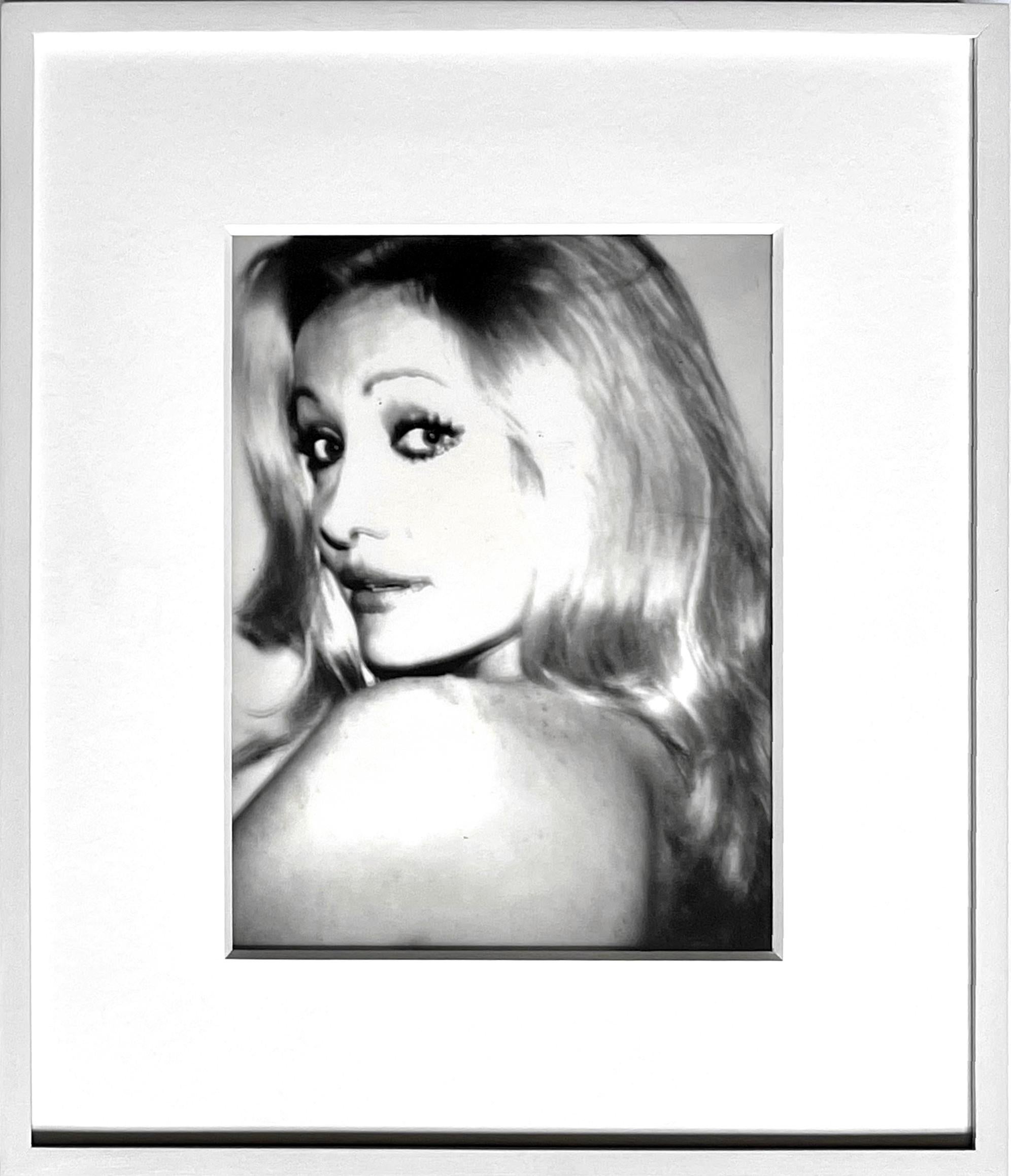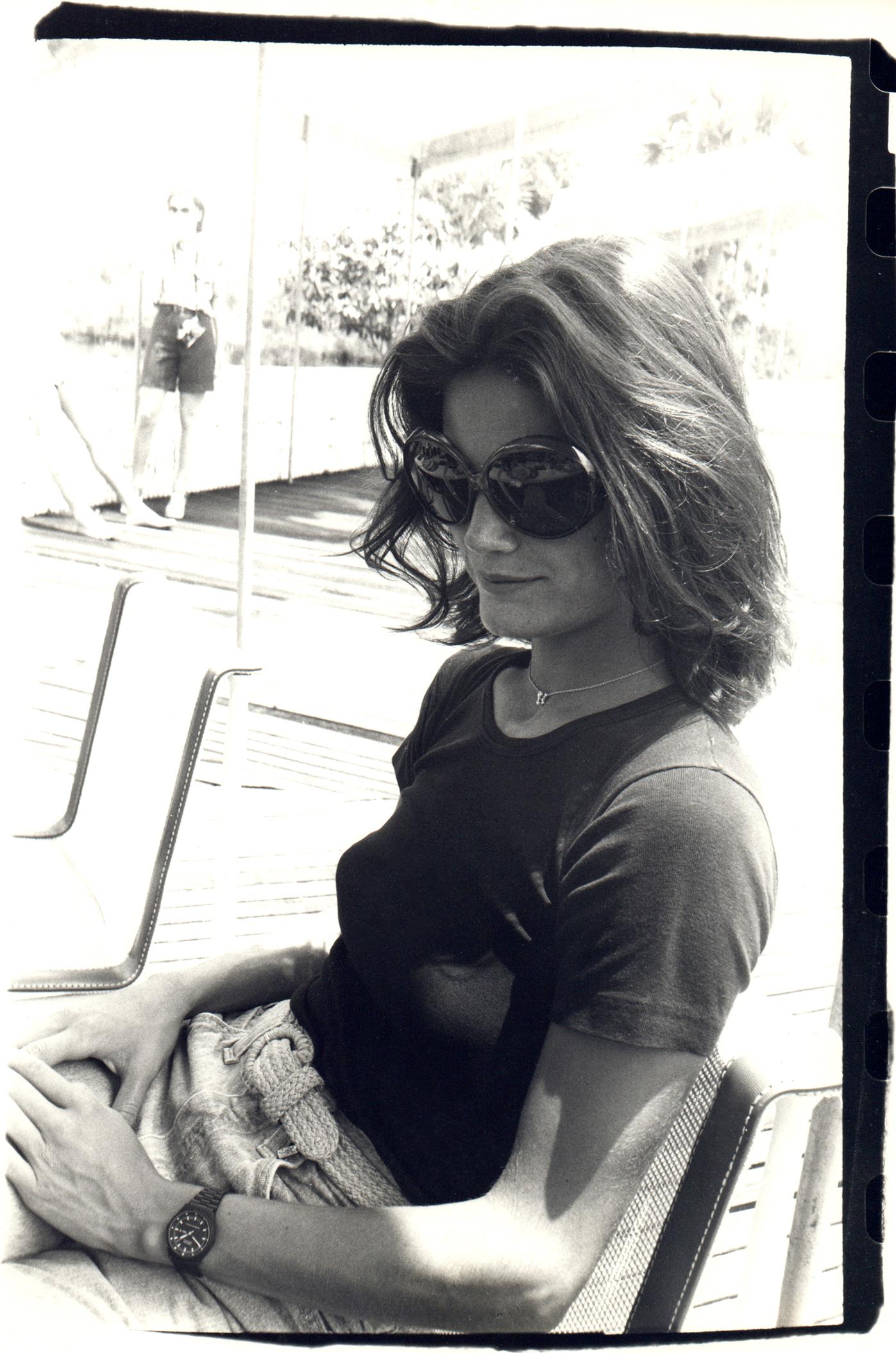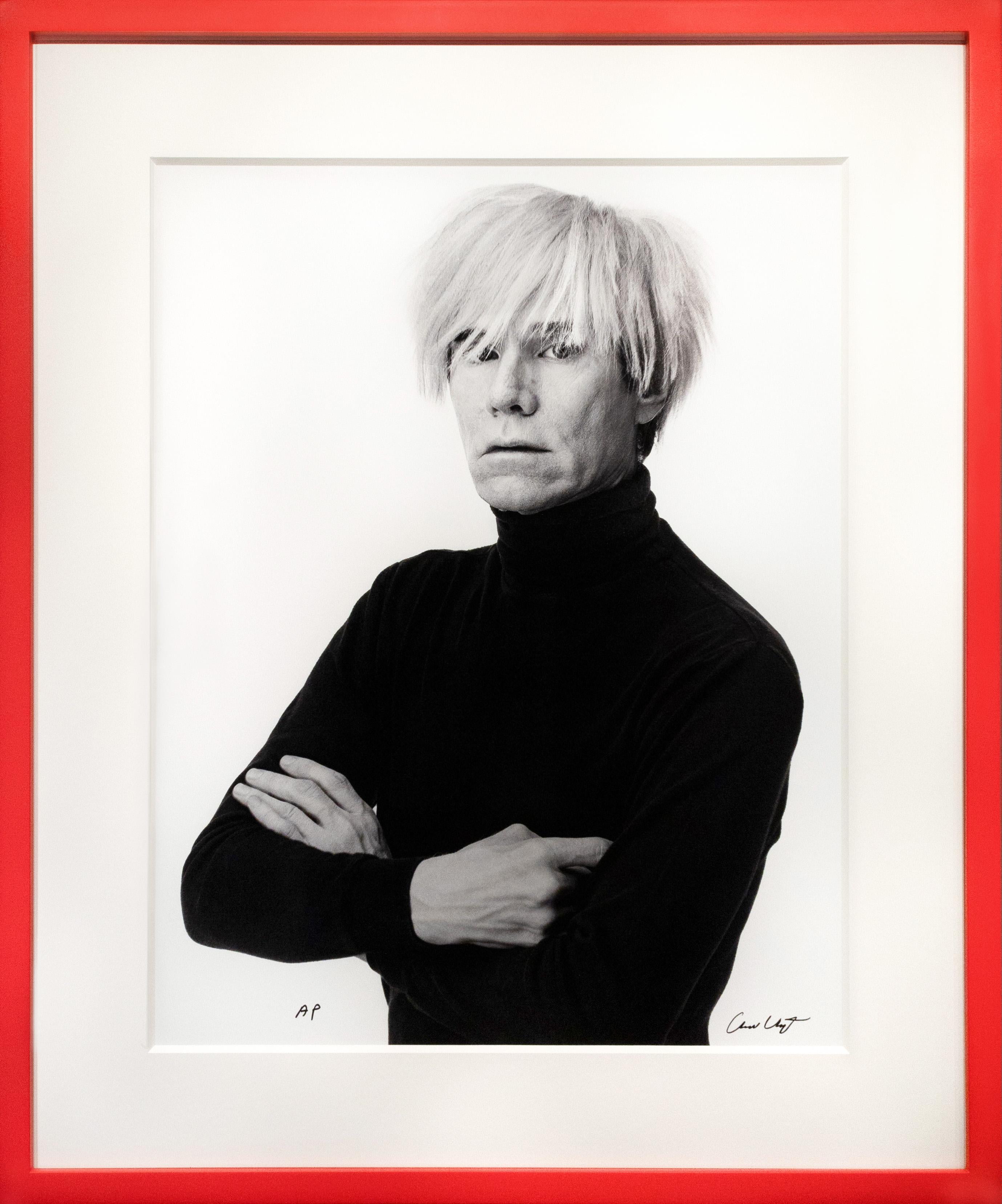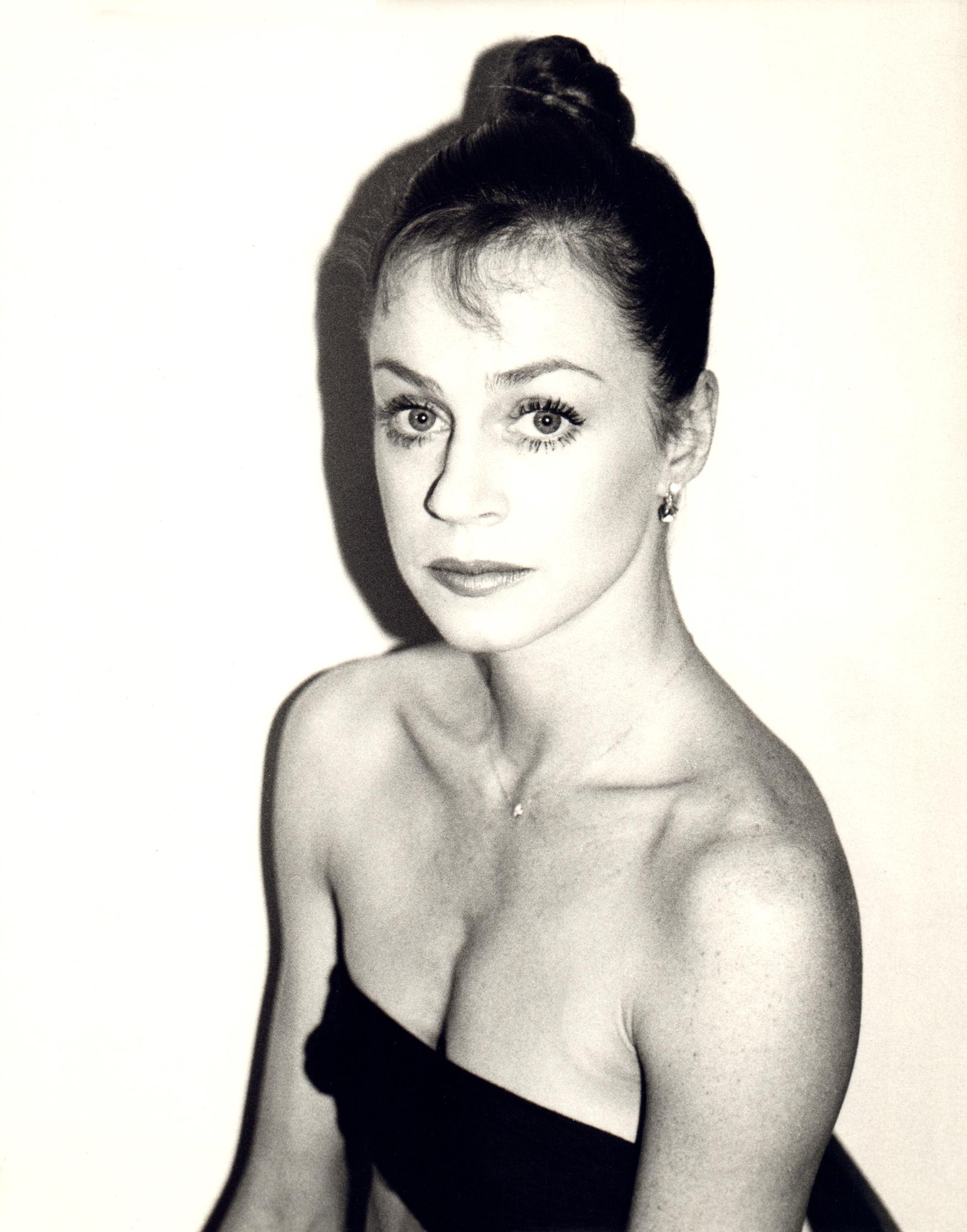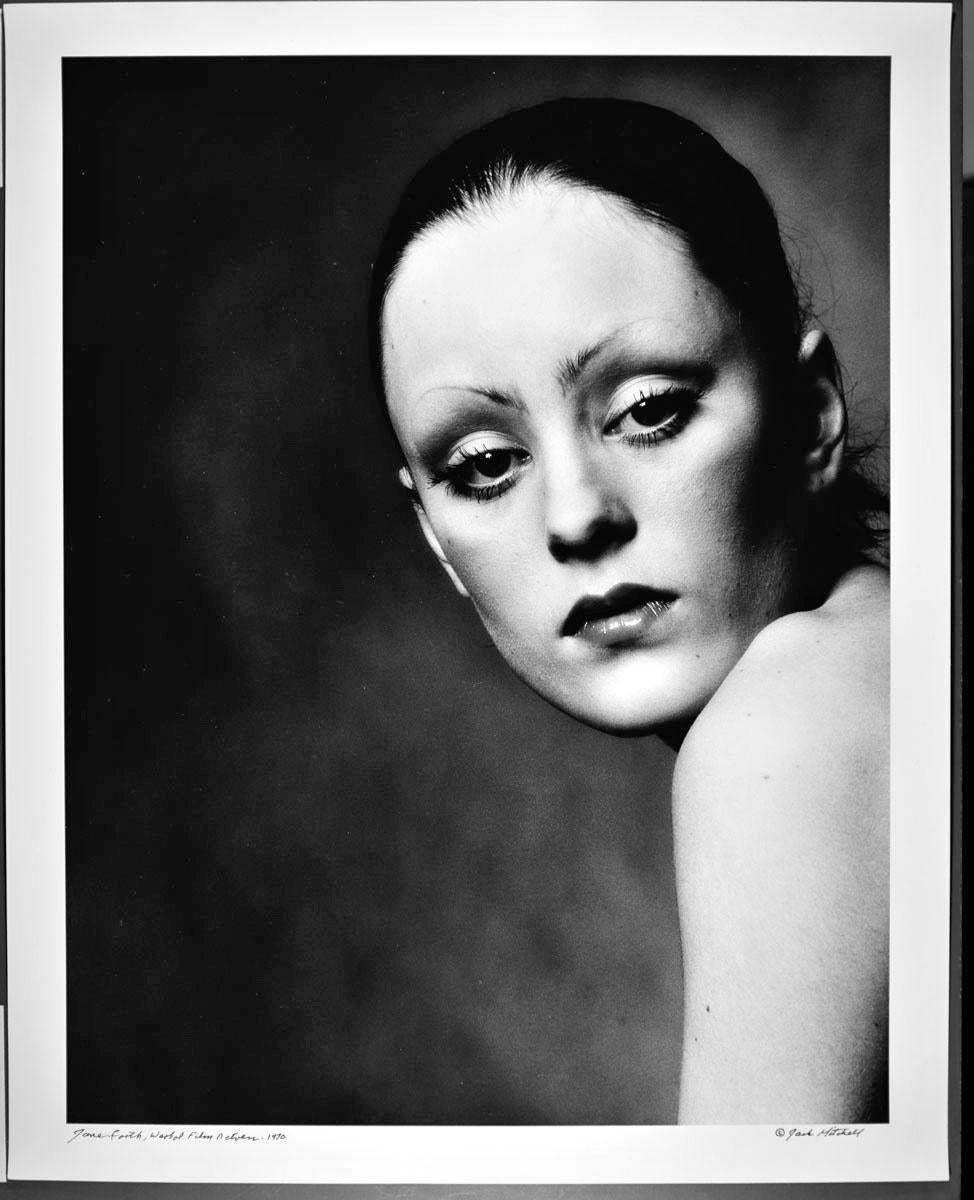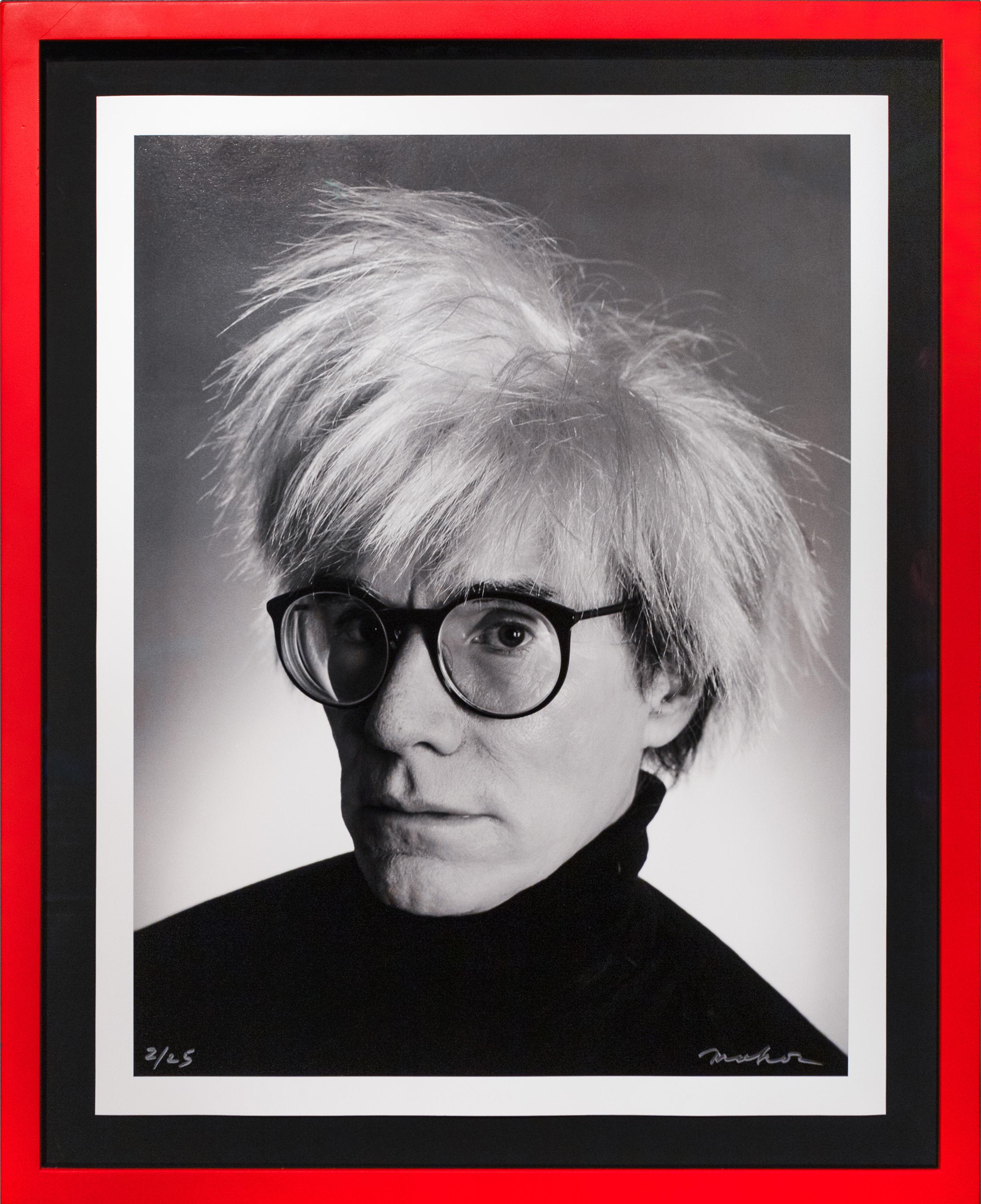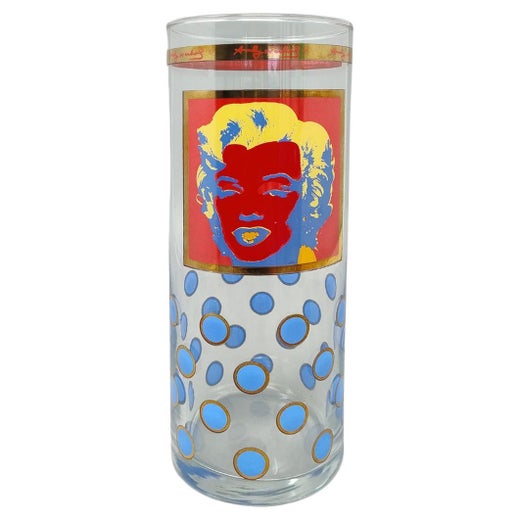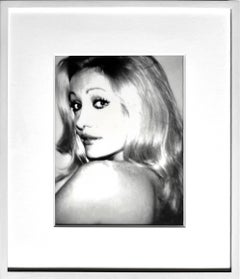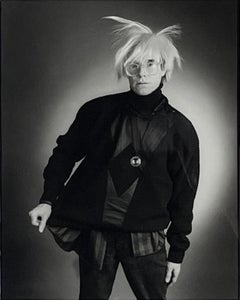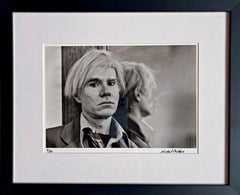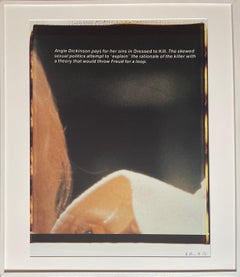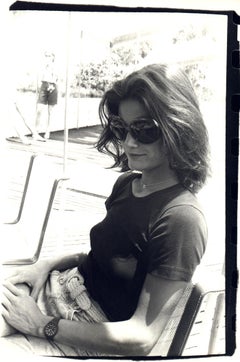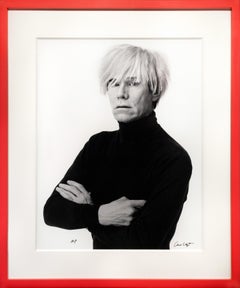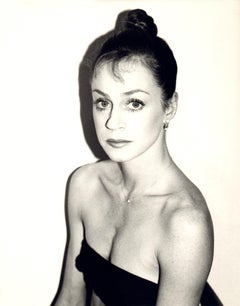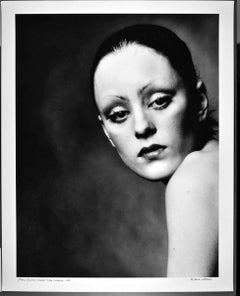Andy Warhol
Nicola (Nicky) Weymouth, ca. 1976
Acetate positive, acquired directly from Chromacomp, Inc. Andy Warhol's printer in the 1970s. Accompanied by a Letter of Provenance from the representative of Chromacomp
Unique
Frame included:
Elegantly framed in a museum quality white wood frame with UV plexiglass:
Measurements:
Frame:
18 x 15.5 x 1.5 inches
Acetate:
11 x 8 inches
This is the original, unique photographic acetate positive taken by Andy Warhol as the basis for his portrait of Nicky Weymouth, that came from Andy Warhol's studio, The Factory to his printer. It was acquired directly from Chromacomp, Inc. Andy Warhol's printer in the 1970s. It is accompanied by a Letter of Provenance from the representative of Chromacomp. This is one of the images used by Andy Warhol to create his iconic portrait of the socialite Nicola Samuel Weymouth, also called Nicky Weymouth, Nicky Waymouth, Nicky Lane Weymouth or Nicky Samuel. Weymouth (nee Samuel) was a British socialite, who went on to briefly marry the jewelry designer Kenneth Lane, whom she met through Warhol. This acetate positive is unique, and was sent to Chromacomp because Warhol was considering making a silkscreen out of this portrait. As Bob Colacello, former Editor in Chief of Interview magazine (and right hand man to Andy Warhol), explained, "many hands were involved in the rather mechanical silkscreening process... but only Andy in all the years I knew him, worked on the acetates." An acetate is a photographic negative or positive transferred to a transparency, allowing an image to be magnified and projected onto a screen. As only Andy worked on the acetates, it was the last original step prior to the screenprinting of an image, and the most important element in Warhol's creative process for silkscreening. Warhol realized the value of his unique original acetates like this one, and is known to have traded the acetates for valuable services. This acetate was brought by Warhol to Eunice and Jackson Lowell, owners of Chromacomp, a fine art printing studio in NYC, and was acquired directly from the Lowell's private collection. During the 1970s and 80s, Chromacomp was the premier atelier for fine art limited edition silkscreen prints; indeed, Chromacomp was the largest studio producing fine art prints in the world for artists such as Andy Warhol, Leroy Neiman, Erte, Robert Natkin, Larry Zox, David Hockney and many more. All of the plates were done by hand and in some cases photographically. Famed printer Alexander Heinrici worked for Eunice & Jackson Lowell at Chromacomp and brought Andy Warhol in as an account. Shortly after, Warhol or his workers brought in several boxes of photographs, paper and/or acetates and asked Jackson Lowell to use his equipment to enlarge certain images or portions of images. Warhol made comments and or changes and asked the Lowells to print some editions; others were printed elsewhere. Chromacomp Inc. ended up printing Warhol's Mick Jagger Suite and the Ladies & Gentlemen Suite, as well as other works, based on the box of photographic acetates that Warhol brought to them. The Lowell's allowed the printer to be named as Alexander Heinrici rather than Chromacomp, since Heinrici was the one who brought the account in. Other images were never printed by Chromacomp- they were simply being considered by Warhol.
Warhol left the remaining acetates with Eunice and Jackson Lowell. After the Lowells closed the shop, the photographs were packed away where they remained for nearly a quarter of a century. This work is exactly as it was delivered from the factory. Unevenly cut by Warhol himself. This work is accompanied by a signed letter of provenance from the representative of Chromacomp, Andy Warhol's printer for many of his works in the 1970s.
About Andy Warhol:
Isn’t life a series of images that change as they repeat themselves?
—Andy Warhol
Andy Warhol’s (1928–1987) art encapsulates the 1960s through the 1980s in New York. By imitating the familiar aesthetics of mass media, advertising, and celebrity culture, Warhol blurred the boundaries between his work and the world that inspired it, producing images that have become as pervasive as their sources.
Warhol grew up in a working-class suburb of Pittsburgh. His parents were Slovak immigrants, and he was the only member of his family to attend college. He entered the Carnegie Institute of Technology (now Carnegie Mellon University) in 1945, where he majored in pictorial design. After graduation, he moved to New York with fellow student Philip Pearlstein and found steady work as a commercial illustrator at several magazines, including Vogue, Harper’s Bazaar, and the New Yorker. Throughout the 1950s Warhol enjoyed a successful career as a commercial artist, winning several commendations from the Art Directors Club and the American Institute of Graphic Arts. He had his first solo exhibition at the Hugo Gallery in 1952, showing drawings based on the writings of Truman Capote; three years later his work was included in a group show at the Museum of Modern Art for the first time.
The year 1960 marked a turning point in Warhol’s prolific career. He painted his first works based on comics and advertisements, enlarging and transferring the source images onto canvas using a projector. In 1961 Warhol showed these hand-painted works, including Little King (1961) and Saturday’s Popeye (1961), in a window display at the department store Bonwit Teller; in 1962 he painted his famous Campbell’s Soup Cans, thirty-two separate canvases, each depicting a canned soup of a different flavor. Soon after, Warhol began to borrow not only the subject matter of printed media, but the technology as well. Incorporating the silkscreen technique, he created grids of stamps, Coca-Cola bottles, shipping and handling labels, dollar bills, coffee labels, and more, breaking down the images to their basic graphic components.
In 1963 Warhol established a studio on East 47th Street, which became known as the Factory and served as a cultural hub for artists, models, performers, and socialites. His inner circle comprised his Superstars, who played a major role in both his work and his social life. Interested in the production of fame, Warhol began to screen-print images of celebrities and public figures, from Marilyn Monroe and Elvis Presley to Jackie Kennedy and Mao Zedong. Expanding his practice, as well as his cultural influence, he produced records (The Velvet Underground & Nico), started a magazine (Interview), and made avant-garde films, such as Chelsea Girls (1966), Blow Job (1964), and Empire (1964), which have become classics of the underground genre.
Following a close run-in with death when Valerie Solanas shot him in 1968, Warhol entered a more subdued, isolated period, working primarily on a commissioned basis and painting portraits for various patrons, while also revisiting themes from his earlier work. He then began to pursue a new interest in abstraction, first with his Oxidations (1977–78), made by allowing friends and acquaintances to urinate on canvases painted with metallic pigments, and later with his Rorschach (1984) and Camouflage (1986) paintings.
By the early 1980s Warhol was producing work across media with a renewed vigor, hosting half-hour programs on MTV, publishing books, and collaborating with younger artists including Jean-Michel Basquiat, Francesco Clemente, and Keith Haring. His abstract series coincided with large-scale works that looked back at masterpieces by Leonardo da Vinci: he screen-printed images of the Mona Lisa (1503) and created several monumental canvases of The Last Supper (1495–98). Warhol’s ability to seamlessly combine art historical reference, abstract patterns, and mass media set new standards for the role of the artist, permanently blurring the lines between commercial and fine art.
- Courtesy of Gagosian Gallery
About Nicky Samuel Weymouth:
Having endured a troubled childhood, during which her adored and fabulously wealthy father died when she was nine and she was assaulted by family friend and French Resistance legend Emmanuel d’Astier at the age of twelve, heiress Nicky Samuel (1951-2019) left school at the age of 16. She was immediately caught up in the world of Sixties London. Her first job was with Yoko Ono and, after being seduced by Jim Haynes of the Arts Lab, and taken up by David Litvinoff, she had soon fallen in love with the owner of the fashionable hippy boutique ‘Granny Takes a Trip’, Nigel Waymouth, with whom she attended the legendary Isle of Wight Pop Concert, and spent time with celebrities such as Andy Warhol, Jane Fonda, Roger Vadim, Bob Dylan, Keith Richards, Patti Smith and Robert Mapplethorpe.
In her nineteenth year, after inheriting a fortune and marrying Nigel, Nicky became a fashionable hostess, entertaining from her home in Mallord Street (Augustus John’s former studio). She was much fêted and photographed, notably by Norman Parkinson for Vogue; and her close friends included Mick and Bianca Jagger, Christopher Gibbs, David Hockney, Michael Wishart and Anita Pallenberg. Her marriage, having cooled sexually, finally broke up when she became involved in a passionate but short-lived ménage-à-trois involving the film-director Donald Cammell. She found friendship at this time with Victoria Brooke and Victoria’s lover, the eccentric and reclusive heroin addict John Paul Getty Jr.; but the extreme pressures of Nicky’s chosen way of life had soon led to her taking heroin, besides mandrax and cocaine.
In 1974, searching for the security and happiness that had so far eluded her, Nicky married the homosexual jewelry designer and New York socialite Kenneth Jay Lane, who had his eye on her fortune. At first her social success was such that in June 1975 she was featured by Time Magazine in an article on the ‘New Beauties’ as one of New York’s ‘social pace-setters’. However, finding the relationship with Lane impossible, she became more and more unhappy and, after a failed attempt at suicide in the London Ritz, Nicky retired to a remote part of North Wales.
In due course she was married for the third time, to a doctor, Richard Griffiths, under whose kindly care she gradually recovered her health. It was here, after more than ten years of living very far from the social maelstrom that, at the age of 39, Nicky entrusted the author Richard Perceval Graves with the remarkable story of her life.
- Courtesy of the Sixties
